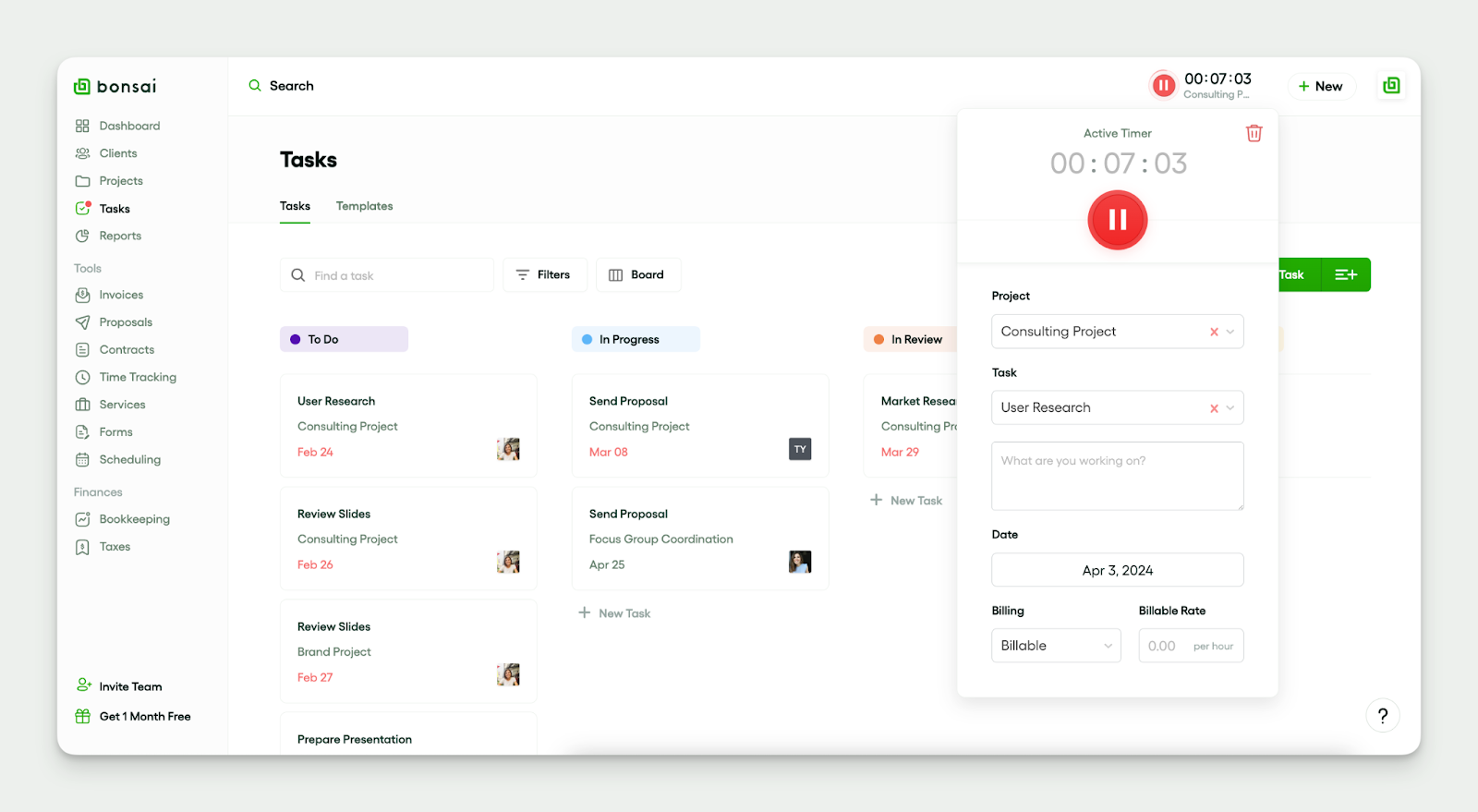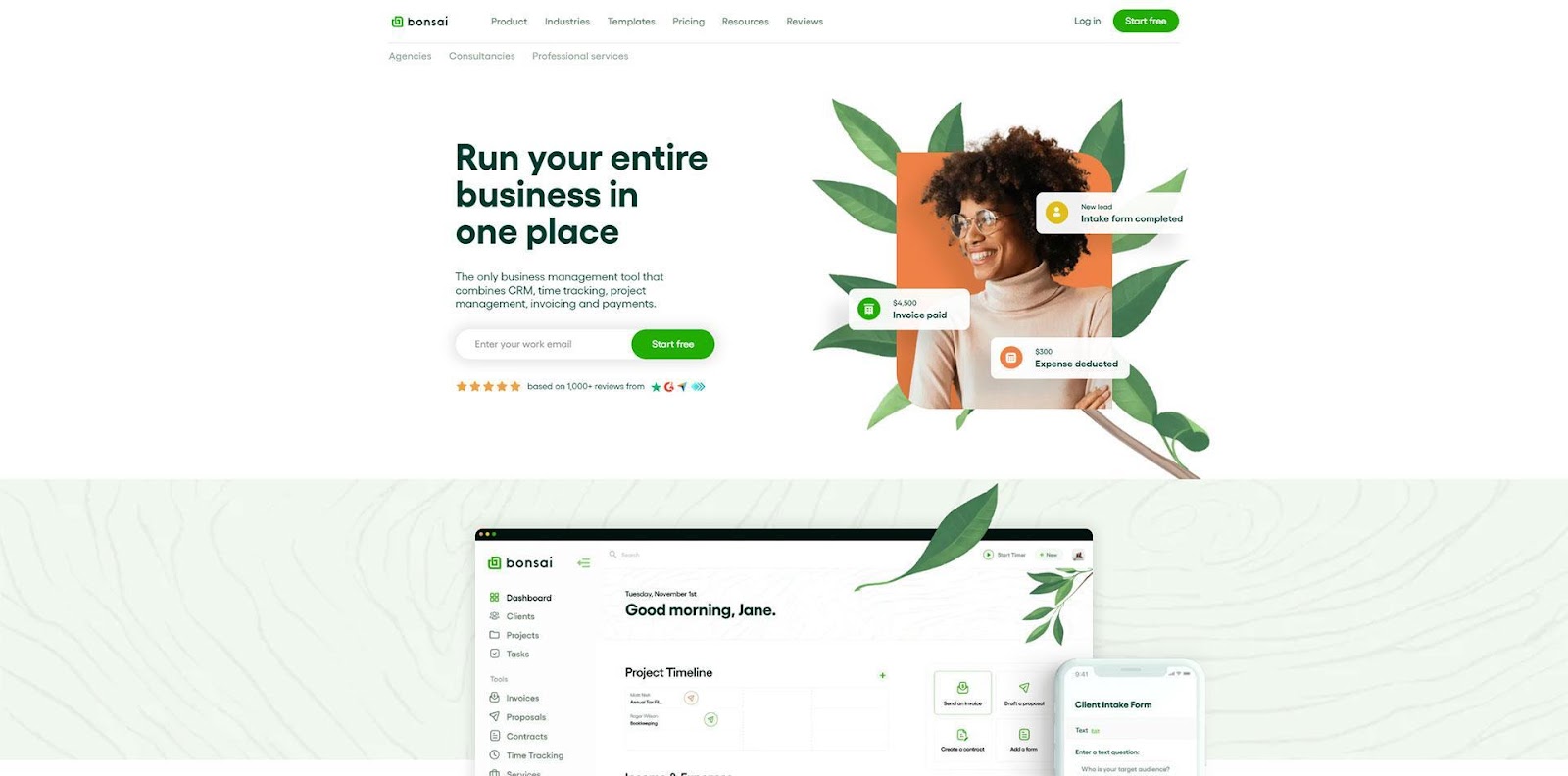A lot of work goes into running an agency. From client meetings and project management to creative ideation and campaign execution, the many tasks demand dedication, coordination, and skillful teamwork. Though success in these tasks hinges on many factors, few are more important than agency processes.
With a robust agency process in place, efficiency becomes the cornerstone of agency operations. Keeping this in mind, let’s explore how your agency can implement a new process or optimize an existing one with one goal – peak performance.

What is an agency process?
If you’re just starting your agency, chances are you’re unfamiliar with the concept of an agency process. So, let’s define it first.
An agency process is the systematic approach an agency uses to achieve its objectives. Though the phrase “agency process” is often used in its singular form, there are, in fact, numerous processes covered by this established framework. They concern various aspects of work, including the following:
- The roles and responsibilities within the team
- The use of technology for agency operations (e.g., the Bonsai business management tool)
- The documentation of progress
- Communication channels
- Measuring and tracking business objectives
Basically, an agency process should answer all critical questions pertaining to everyday operations. Here are a few examples of those questions to help you understand the importance of a well-defined agency process:
- What is the onboarding process for new employees (and clients)?
- How often are meetings held?
- What paperwork is sent to stakeholders?
Use a project management software
Using a project management tool is as important as implementing processes into your agency. One of the best features of Bonsai is its reliable project management tool. It has built-in time tracking and task management features that can help you achieve a smooth internal process.
Here's how Bonsai can enhance your team's project management capabilities effectively:
Track your team's time accurately
Time tracking in an agency setting is important because it allows your team members to log the time they spend on their tasks accurately. Project managers can easily see their time entries in the dashboard.

Learn more about Bonsai's time tracking features
With Bonsai, time tracking is simple and easy. You just have to start a new timer and select the project and task that you are working on. Select if the task should be billable or not and add the billable rate, if applicable. You can also add notes to help you remember what work was done during that time.
If your team member forgot to run the time tracker, they can simply add time entries manually. After you add the project details, log how much time was spent on the task and the date it was done. The timer also allows you to pause and resume when needed, making it convenient for breaks or interruptions. And that’s how efficient time tracking can be with Bonsai.
Keep your projects on track and on budget
Aside from accurate time tracking, Bonsai also has a task management feature. You can assign tasks to your team members, set deadlines, and track their progress. The task dashboard lets you see your priorities in either Kanban or list boards. You can also filter the tasks by date, status or assignee among others.

Learn more about Bonsai's task management features
Creating a task is also a breeze. Simply click the New Task button, add the task name, assign it to the appropriate team member then set the priority and you’re good to go! It also allows you to set the frequency if the task is a recurring one. Adding dependencies and tags helps you organize your tasks even further. Since Bonsai is an all-in-one tool for agencies, it also lets you start timers from your tasks list. This makes it easy to bill your clients accurately.
Agency process benefits
As you’ll soon see, implementing a new agency process is no easy task. It requires several complex steps that might seem too overwhelming for a new agency owner. But remember one thing – the benefits of implementing a well-thought-out agency process far outweigh the initial challenges.
In fact, start running your agency without this crucial component, and the challenges will only multiply.
Without an agency process, you’ll likely deal with inefficient workflows, unclear roles, communication breakdowns, and all-around disorganization. Project timelines will become unpredictable, deadliness will be missed, employees will experience burnout, and clients will be dissatisfied.
Worst of all? Since agency processes only concern effective monitoring and reporting, you won’t even be able to learn from your past experiences to optimize future strategies.
But with an agency process, all of these unfortunate scenarios disappear.
Instead, your agency (and employees) will be able to do the following:
- Save time. Bid farewell to “friendly” reminders, back-and-forth emails, and endless searches for project-related information.
- Hold all stakeholders accountable. Thanks to the agency process, you’ll always know who’s doing what and when. This also means you’ll know who’s responsible for both the successes and the failures.
- Increase efficiency. An agency process takes all the guesswork out of task management. With clearly defined steps, tasks move seamlessly from initiation to completion.
- Transfer business knowledge. A properly implemented agency process always comes with extensive documentation. This documentation can be used to ensure the team operates cohesively regardless of changes in its structure (e.g., a team member calls in sick, goes on holiday, or quits).
- Continuously improve. An optimized agency process is your one-way ticket to agency growth. You’ll know exactly what works and what doesn’t and, best of all, how to improve the latter.
How to develop an agency process: A step-by-step guide
Now that you know why an agency process is crucial for your agency, let’s show you how to develop one. Follow this step-by-step guide carefully, and this should be a smooth ride.

Step 1 – Assess your agency needs
No two agencies are the same. In other words, relying on a one-size-fits-all approach simply won’t work. So, before you rush to implement an agency process, take the time to assess your agency’s individual needs.
You can start by listing and analyzing all the tasks involved in specific projects, client interactions, and internal operations. Ideally, your agency will use a business management tool like Bonsai for this endeavor. If so, this step will be a breeze thanks to its built-in task management capabilities.
Then, you can identify all the relevant stakeholders and their current roles and responsibilities. Arranging an all-hands meeting might help you with this task. You can also use this meeting to hear directly from your employees or team members. The question is simple – what are the obstacles that prevent them from executing their tasks?
If you already have an agency process in place, this is the step where you analyze it. Identify its strengths, weaknesses, and areas for improvement.
As you can probably conclude by now, the goal of Step 1 is to understand the core operations and dynamics of your agency. Only by doing this can you begin to develop an agency process that will truly benefit your agency. So, dig deep, get as much information as possible, and set yourself up for success from the get-go.
Step 2 – Set clear objectives
Think of Step 1 as a workflow audit – you’ve assessed where your agency currently is. In Step 2, you’ll determine where you want your agency to go.
Devising an agency process isn’t done just for the sake of it. There should be a clear business objective behind each decision you make. And we aren’t talking about vague and open-ended objectives like “earn more money” or “improve efficiency.” Your goals need to be much smarter than that (pun very much intended!).
Let’s say your goal pertains to improving the client onboarding process. Here’s how that goal should be structured using the SMART framework:
- Specific: Implement a digital onboarding system to streamline client interactions.
- Measurable: Reduce the average client onboarding time from initial contact to project kickoff by 25%.
- Attainable. Identify user-friendly business management software with robust onboarding capabilities (e.g., Bonsai).
- Relevant. Improving the onboarding process directly affects the client satisfaction levels and, in turn, your agency’s reputation.
- Time-based. Complete the digital system implementation within a month and achieve the targeted reduction within the next three months.
Writing SMART goals will help you bridge the gap between insights gained in Step 1 and actionable steps taken in subsequent stages.
Step 3 – Acquire the right tools
Let’s not sugarcoat it – you’ll hardly be able to achieve any of your goals from Step 2 without technology. So, after learning and defining exactly which tools you need to succeed, it’s time to acquire them.
Now, getting standalone tools for every business objective would be a waste of time and money. Just think of all the learning curves your team would have to navigate at once!
The better solution? Invest in an integrated business management platform that can address multiple objectives cohesively. For instance, Bonsai can help you with client, project, and financial management. So, let’s say your goals are to be radically transparent with your clients, streamline collaboration with contractors, and speed up payments. You can achieve all these goals using Bonsai, thanks to its Client Portal, Collaboration, and Invoicing tools, respectively.

Other technologies you might need include communication platforms like Slack, video conferencing tools like Zoom, and file-sharing platforms like Dropbox.
Step 4 – Implement the agency process
After laying all the groundwork, it’s time to get down to business. But even now, there’s no need to rush. Overhauling your entire agency process overnight can only lead to confusion, resistance, and chaos.
Instead, implement changes, fill gaps, and address issues strategically and gradually. Start with issues you deem the most pressing and work your way through the implementation process from there.
Here’s an example of gradual implementation. Let’s say your agency struggles with employee burnout, resulting in a backlog of work. You can address this issue by following these steps:
- Eliminating high-effort, low-value work
- Automating mundane and repetitive tasks wherever possible
- Introducing more flexible work arrangements
- Distributing the workload more evenly across stakeholders
Step 5 – Define and track milestones
Your work isn’t done once you implement the agency process. In fact, it has only just begun!
Now, it’s time to keep an eye on the “measurable” and “time-based” parts of the SMART goals. In other words, you must ensure your agency is achieving desired goals within the pre-determined timeframe.
However, some of your business objectives are probably long-term. So, instead of waiting a few years to “check off” a goal, define important milestones along the way. This way, you won’t waste months or years before realizing your strategy isn’t effective after all. Was the milestone not met in time? OK, something has to change!
With this approach, you’ll ensure the agency process evolves and adapts efficiently. Plus, all your Key Performance Indicators (KPIs) will be met.
And don’t forget a crucial part – document everything!
How to properly document an agency process: The best practices
As mentioned, one of the primary benefits of an efficient agency process is a seamless transfer of business knowledge. But for this transfer to happen (and the agency process to work), you must document everything extensively.
What do we mean by “everything?”
Proper process documentation should include the following elements:
- The name of the process. This part is purely practical – it will help you organize procedures logically and find them quickly.
- The (SMART) goal behind it. Explain to your existing (and new) employees why this goal exists.
- Key stakeholders. With this part, there will be no confusion about who should be involved in this specific process.
- Tools and resources. Indicate which tools must be used for this process to avoid any confusion or overlap. For instance, time-tracking should only be done through Bonsai.
- Step-by-step procedure. This is the main part of the documentation. Think of it as a guide on what exactly needs to be done, step by step. Include clear instructions for each step with as many details as necessary.
Besides helping onboard new employees with ease, such detailed documentation will ensure your existing employees actually adopt and follow the new process.
Given the importance of process documentation, you should pay special attention to how you write (and maintain) it. Here are some of the best practices in this regard.
1. Choose the appropriate document format
If a specific process has numerous steps, consider presenting it as a flowchart or checklist to help stakeholders get through it more quickly. After all, the point of an agency process is to save time, not waste it. These visual formats are lean on words but still convey the necessary information effectively.
Alternatively, include both a detailed breakdown and its visual representation and let stakeholders decide which to consult based on the available time.

2. Use clear and concise language
The whole point of process documentation is to get everyone on the same page. You’ll hardly achieve this goal by using complicated or convoluted language. Instead, prioritize clarity and simplicity to ensure all stakeholders understand all documents easily. If you need to include a lot of technical expressions, consider adding a glossary to explain these terms.
3. Include a table of contents
If a specific procedure is rather lengthy, you (and your employees) will benefit from adding a table of contents at the beginning of the document. With this handy addition, users can quickly navigate to specific sections of the document to refresh their understanding or find relevant information without having to scroll through the entire document.
4. Make process documentation easily accessible to all stakeholders
Process documentation can only benefit all stakeholders if all of them are able to find it. So, store this documentation in a central folder and ensure all stakeholders have access to it. If there are any procedures only clients should be aware of, make sure you have a convenient way to share them. Example – Bonsai’s Client Portal.
5. Regularly update process documentation
As much time and effort as you invest in developing your agency process, chances are at least some procedures won’t work out in the long run. If this happens (and you change the procedure), make sure to also update its documentation.
But be careful – you shouldn’t just discard the previous document outlining the unsuccessful procedure. Instead, make a change log and clearly explain the reasons behind specific modifications. This will help your team learn from previous mistakes.
Even if there aren’t any notable changes, you might benefit from scheduling regular documentation reviews (e.g., every three months) just to ensure the information is current, accurate, and aligned with your agency, employee, and client needs.
How to introduce a new agency process: The best practices
Let’s say you’ve put several procedures in place and follow the proper steps for monitoring and documenting their progress. Unfortunately, over time, you realize some of them are just not working. They might miss the mark altogether or fail to achieve the pre-defined goal within the set timeframe. What then?
If this happens, it’s time for a change. Basically, you’ll go through the agency process development stages once again. However, this time, you’ll factor in the lessons learned from the unsuccessful procedures.
But this is often easier said than done. Why? Stakeholders might resist another change. After all, change means they’ll have to adapt to a new way of working and potentially face disruptions. To avoid this unfortunate scenario, keep these tips in mind when introducing a new agency process.
Involve the stakeholders in decision-making
No drastic change should be made without the buy-in from all relevant stakeholders. After all, they’re the ones that will be enforcing the changes. Fail to get their support beforehand, and your proposed change stands no chance of successful implementation.
Remember that Step 1 of the process development calls for an all-hands meeting, so consider doing the same during the decision-making process for any notable changes.
Offer training to stakeholders
The initial agency process training is a must. However, the same goes for retraining stakeholders in the event of any notable changes. With the right resources, explanations, and guidance, stakeholders should be less resistant to changes.
Emphasize the goal of the change
The only way to get all stakeholders on board with drastic changes is to make them aware of why those changes are happening. Ideally, the goal behind those alterations will concern them, making it easier to accept them.
For instance, let’s say the current procedure for generating deliverables has employees working overtime to meet the deadline. It’s only natural for them to welcome any proposition aimed at changing that with open arms.
How to optimize an agency process: The best practices
Even after an agency process is in place, whether new or updated, you can always improve its efficiency and effectiveness. Here’s how.
Use automated development
One of the primary goals of an agency process is to improve efficiency within the organization. And what better way to do this than through automating task development?
By introducing automation wherever possible, you’ll reduce manual effort, minimize errors, and speed up task completion. Talk about a win-win(-win) scenario!
Of course, to do this, you’ll need a trusty platform as your partner. With Bonsai, you can implement numerous automatic actions, streamlining all processes, from project management to invoicing.

Clarify roles and responsibilities
As much as you try to prepare for everything, unforeseen challenges are bound to emerge from time to time. By their very nature, these challenges won’t be covered by your agency process, which might cause disruption or, even worse, a complete breakdown of operations.
But as long as the roles and responsibilities within your agency are well-defined, no similar scenarios should occur.
When every team member thoroughly understands their area of accountability, they can quickly adapt and respond to any challenge that might arise.
Host regular review meetings
This guide mentions review meetings several times, which should speak volumes about their importance. Regular touch-base meetings are the best way to consistently optimize your agency process without making any sudden or drastic changes.
Establish a predictable time slot (e.g., once a month) when the team can gather to assess their progress and potentially bring up any pain points. This approach will also eliminate excess communication throughout the day, as the employees will reserve their questions and concerns for the designated review meeting.
The agency process is an investment
Two things can be true at the same time. Yes, a properly implemented agency process will bring a myriad of benefits to your agency. And yes, to get to the “properly implemented” part, you’ll need to invest a lot of time, energy, and resources. But hey – the same can be said for any transformation that brings about efficiency, collaboration, and innovation.
As long as you know what to do (This guide can help with that!) and rely on the best tools (It’s Bonsai to the rescue!), your agency process development should be nothing but a rewarding journey to excellence.







